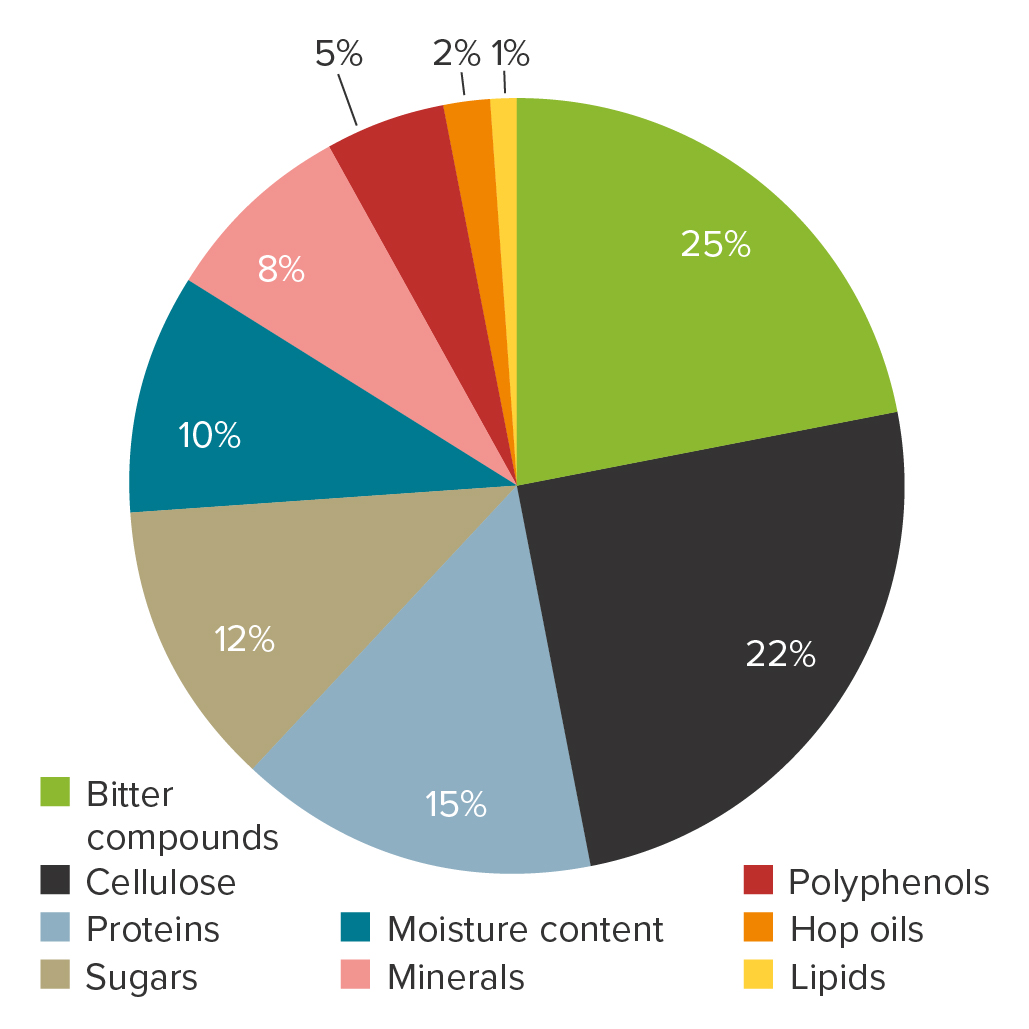
Leaf Hops (bales or vacuum packs)
Overview
Leaf Hops are naturally grown and dried hop cones. The content of oils, resins (alpha and beta acids) and polyphenols is important for the brewing process. These substances contribute to the overall flavor, required level of bitterness and hop aroma of beer.
Leaf Hops can be used on both the hot side (kettle hopping) and the cold side (dry hopping) of the brewing process.
Baled Leaf Hops cannot be stored indefinitely and cold storage is highly recommended. Leaf Hops are also available in vacuum packs which greatly improve storage stability.

Specifications
- Short description
- dried and compressed hop cones
- Alpha acids
- 1 - 25 %
- Beta acids
- 1 - 24 %
- Hop oils
- 0.2 - 4.5 ml/100 g
- Moisture content
- 6 - 11 %
Properties
Appearance
Greenish hop cones in an oval or roundish shape (depending on variety). Bale-packed Leaf Hops is present as pressed hop cones and has only a small proportion of leaves and stems.
Flavor
Leaf Hops provide bitterness and aroma to the beer. The flavor depends on the variety, quantity and time of addition. For further information, please refer to the hop variety data sheets.
Utilization
Given as an early kettle addition (up to 15 min after the boil begins), hop utilization normally falls within a range of 22 - 28 %. When Leaf Hops are added late in the boil, utilization is lower and is dependent on individual process conditions. Both additions can vary depending on the desired intensity and the beer style.
Quality
All Hopsteiner® products are processed in facilities which fulfill internationally recognized quality standards.
Packaging
Our products are delivered in their respective recommended standard packaging. Alternatives may be possible upon customer request.
Standard packages of our processing plants in the USA (US) and Germany (DE) are:
- pressed into rectangular bales (ca. 60 kg DE / ca. 200 lbs US)
- ca. 5 kg vacupack in 5-layer aluminum foil (350 x 300 x 80 mm) (DE)
Usage
Dosage
The quantity of Leaf Hops in an addition can be calculated using the alpha acid content and an estimated or known utilization. Late kettle additions of Leaf Hops (typically 5 - 20 min prior to the end of the boil) reduce alpha acid utilization but increase hop aroma and flavor.
Application
For primary bittering or late kettle hopping, Leaf Hops can be added directly to the wort kettle or hop dosing vessel. Dry hopping normally involves the addition of Leaf Hops during secondary fermentation or maturation using various techniques.
Storage
The recommended storage temperature in the original unopened packaging is < 5 °C (41 °F).
Leaf Hops should be stored in a dry, dark place at low temperatures. Wet bales are subject to degradation. Precautions must be taken to prevent the self-ignition of baled hops.
Best Before Date
Under the recommended storage conditions, the shelf life from the date of production/ packaging is at least 3 years (vacuum-packed).
Safety
Ensure good ventilation of the workplace and wear personal protective equipment. Avoid contact with eyes and skin. Do not inhale vapors or dusts. For full safety information, please refer to the relevant Hopsteiner® safety data sheet.
Analytical Methods
International approved methods listed in commitees such as ASBC or Analytica-EBC using current standards are applied.
Product analytics
- Analytica-EBC 7.4 (LCV)
- Analytica-EBC 7.5 (LCV)
- ASBC Hops-6B (LCV)
- Analytica-EBC 7.7 (HPLC)
- ASBC Hops-14 (HPLC)
- ASBC Hops-6A (Spectro)
Technical Support
We are pleased to offer assistance and advice on:
- safety data sheets
- support for brewing trials on a pilot or commercial scale
- analytical services and information about analytical procedures
Disclaimer: The information provided in this document is believed to be correct and valid. However, Hopsteiner® does not guarantee that the information provided here is complete or accurate and thus assumes no liability for any consequences resulting from its application.
Last updated: 06/11/2023
Save PDF